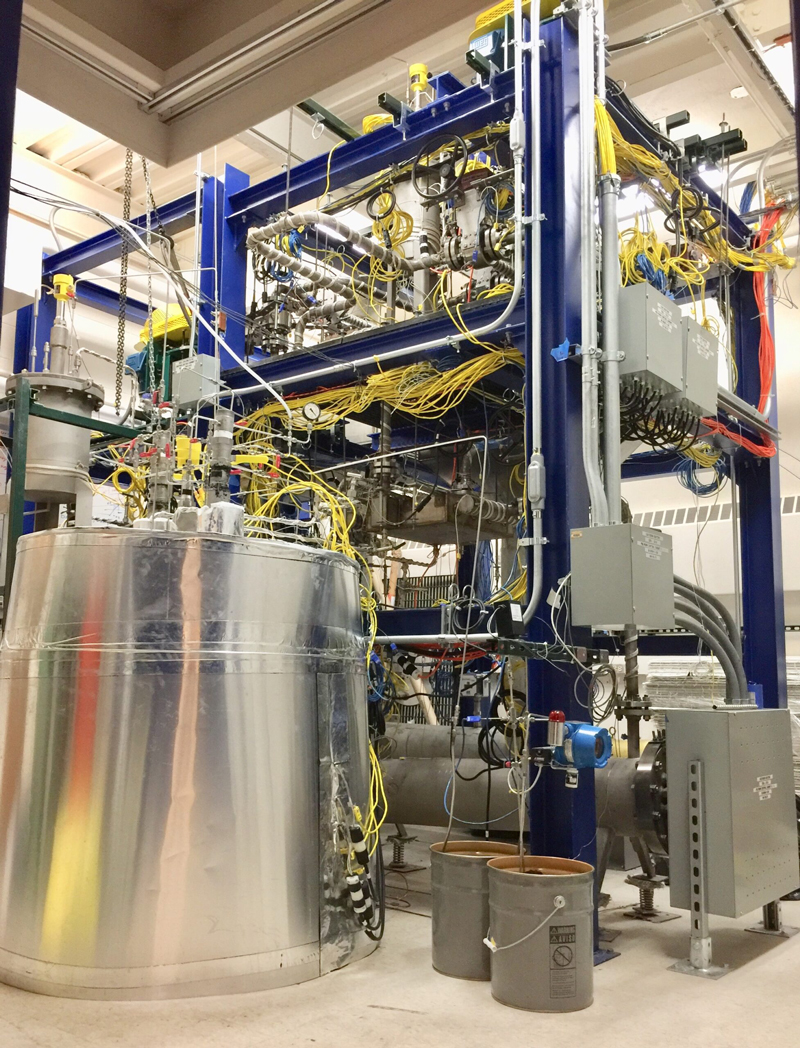
Researchers at the University of Michigan in Ann Arbor were awarded a three-year, $5.2 million grant from the Advanced Research Projects Agency-Energy to find a way to offer safer and more affordable nuclear energy.
The study will develop artificial intelligence-enhanced digital twins of nuclear reactors and includes partners at Illinois’ Argonne National Laboratory, Idaho National Laboratory, and engineering firms Kairos Power in California and Curtiss-Wright Corp. in North Carolina.
The team aims to reduce maintenance costs for nuclear power plants by predicting when components need replacing, rather than relying on overly cautious maintenance schedules. It also wants to design the plants so they’re less expensive to build and run. Finally, it aims to enable nuclear power to ramp up according to demand, becoming a better complement to wind and solar energy.
Having a virtual reactor that is a near-exact replica will help the team with all of these aspects. The digital twin reactors will be based on physics models running on the reactor design, paired with real-time data coming from the sensors on the reactors and supervised by artificial intelligence.
“Often, AI or machine learning is used as a black box. It doesn’t take advantage of the physics we know,” says Annalisa Manera, professor of nuclear engineering and radiological sciences at U-M and principal investigator on the project. “On the other hand, approaches where you use only a physical model might suffer from inaccuracy because it is too idealized.”
Manera and Thomas Downar, professor of nuclear engineering and radiological sciences at U-M, have experience developing high-fidelity physics codes that contributed to a complete nuclear reactor simulation. The project team will use a combination of high-fidelity simulations and experimental data to build more approximate versions of the models that are fast enough to run in real time.
The model will use a ConFlux, a relatively new computer system at U-M that is designed to combine the two approaches. The lead developer of the system, Karthik Duraisamy, professor of aerospace engineering, is also co-principal investigator.
The digital twin could help enable automation and a tailored maintenance schedule. An AI decision maker could use the simulator to identify problems and the likely results of interventions. It could enable automation to perform ordinary operations and respond to accidents.
Nuclear power has not conventionally been used to ramp energy production up and down as needed; reactors tend to run flat out all the time. However, with the need for a low-carbon energy source capable of complementing renewable sources such as solar and wind power, there is interest in nuclear power that is capable of load following, or changing production according to demand. An AI system could help enable load following in a nuclear power plant.
The team will validate and demonstrate their software in Xiaodong Sun’s lab. Sun is a professor of nuclear engineering and radiological sciences as well as a co-principal investigator. The loop runs molten salt as the coolant, emulating cooling loops inside an advanced reactor type called a molten salt reactor.
The researchers will then use the software to optimize the design of the Kairos Power fluoride-salt-cooled, high-temperature reactor. In part because the salt cannot boil away and because the reactor operates at low pressure, the Kairos design is safer than the water-cooled reactors in use today.





